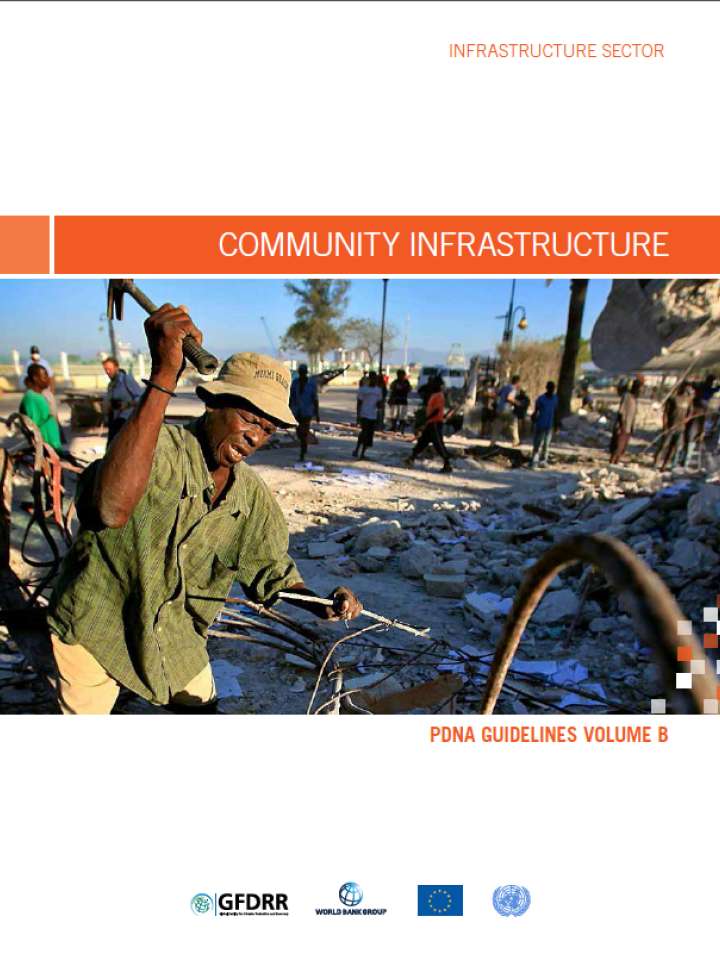Post-disaster needs assessments guidelines: Volume B - Community Infrastructure
Community infrastructure primarily refers to small scale basic structures, technical facilities and systems built at the community level that are critical for sustenance of lives and livelihoods of the population living in a community. These are low-cost small-scale infrastructures built over time through community-led initiatives according to the needs and aspirations of the community population. These micro infrastructures are socially, economically and operationally linked with community lives and livelihood options, ensure basic services to its population and are thus conceived as critical lifelines for survival of the community.
Community infrastructures, because of being less robust in their design, are usually subjected to severe damage by any natural event of reasonable magnitude or intensity. These small-scale infrastructures represent a weaker segment of the assets available at the local level, making the community more vulnerable to the challenges of disasters. The conditions are worse for urban community infrastructures that are built in and around slums and informal settlements
Due to the informal conditions under which the community infrastructure has been developed, these structures are often absent from the official government records and have not been accounted for in the national accounting systems. The recovery of community infrastructure is essentially a community-driven process and it is therefore important to ensure that the assessment should be guided by the insights and participation of the community populations. This poses significant challenges and often makes the process an unusually complex and difficult undertaking.
This guide is intended to support and facilitate post disaster recovery of community infrastructure with particular emphasis on:
• Systematic assessment of the nature, type and extent of the disaster’s effect on the community
infrastructure in the affected regions;
• Determination of the consequences on the community infrastructure, the aggregate macroeconomic
and human development levels of the country; and
• Determination of a recovery and reconstruction strategy that is based on community participation.

